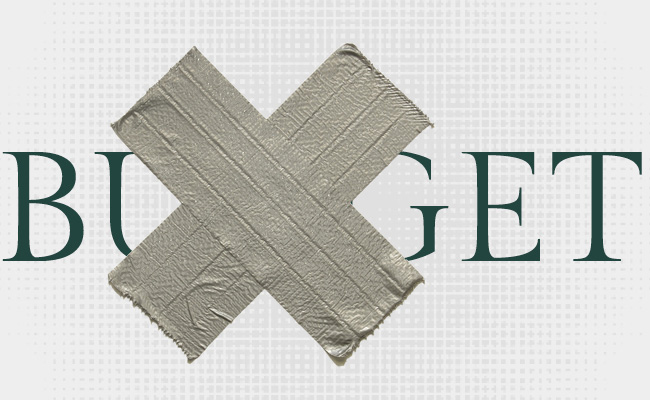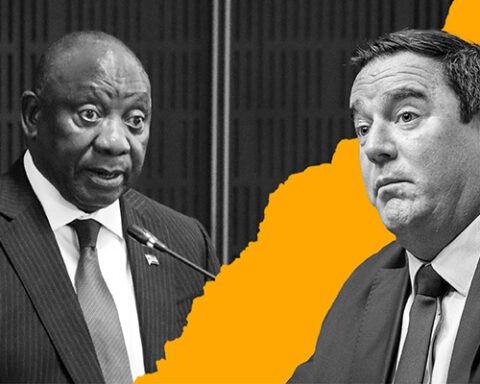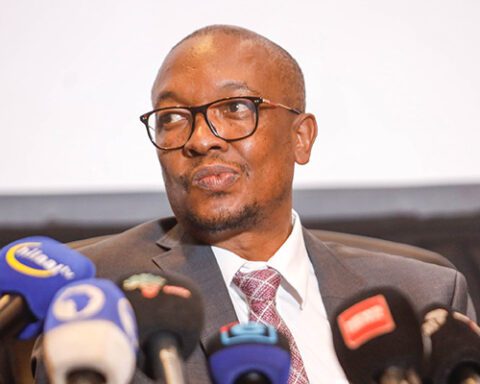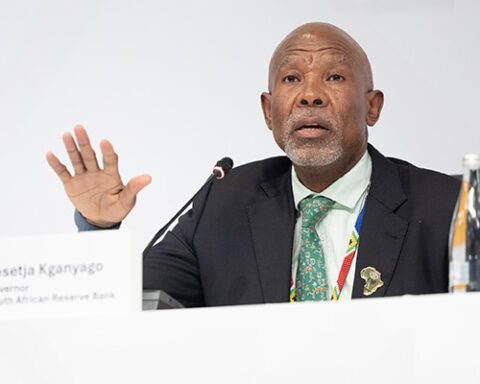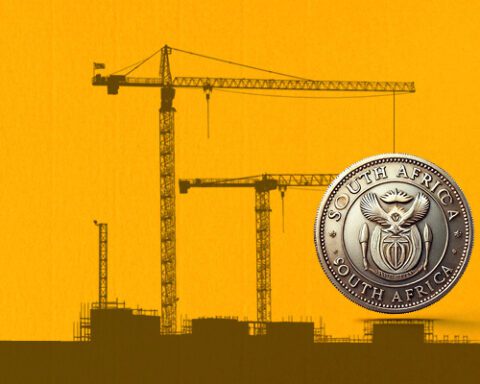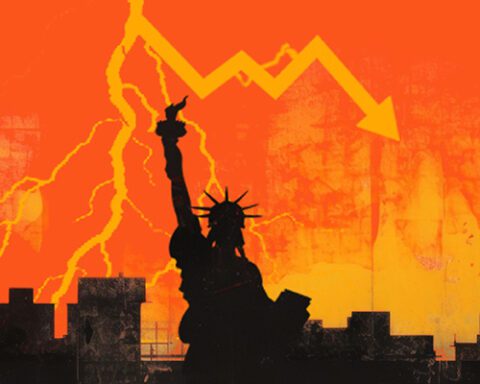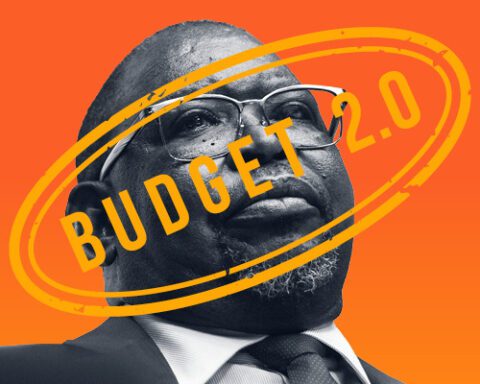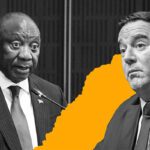The scrapping of a surprise two percentage point VAT increase this week punched a R58bn hole in South Africa’s finances – the equivalent of the government’s planned spending on courts and prisons. With just three weeks before he presents the new budget, finance minister Enoch Godongwana has vanishingly few options left.
Except, that is, to potentially raise VAT by a single percentage point, to 16%.
It’s not what anyone wants to hear, but the National Treasury is under immense pressure. On one side, it faces mounting demands for higher social grants, union-negotiated wage increases and urgent infrastructure spending. On the other, investors and credit ratings agencies are pushing for lower debt metrics, tighter cost controls and faster economic growth.
It can’t hike corporate taxes (if anything, it would prefer to lower them to attract investment); personal income taxes are already stretched to their limits; and social grants cannot be cut without risking social unrest.
“The National Treasury’s discretionary spending power is shrinking,” says Fouché Venter, the executive director of Economic Research Southern Africa. “As a result, when faced with a fiscal consolidation mandate, tax hikes become almost inevitable.”
The finance minister dropped a bombshell on the coalition government on Wednesday when, just hours before he was to present his budget speech, he told the cabinet that VAT would increase from 15% to 17%. ANC, DA and other government of national unity (GNU) partners were said to have objected to the proposal and, when an agreement couldn’t be reached, the budget’s announcement was pushed out to March 12.
The Treasury was well aware of the mounting spending pressures – ranging from potential above-inflation public sector wage hikes to new funding for hiring and retaining frontline workers like teachers and doctors, as well as the extension of the social relief of distress grant.
These challenges were foreseeable long before last year’s medium-term budget policy statement, raising questions about why the public narrative wasn’t shaped earlier. The VAT discussion could’ve been introduced sooner instead of emerging as a “last-minute solution”, Venter notes.
The Treasury has ruled out additional borrowing to cover the shortfall. Broad spending cuts won’t be enough, meaning targeted, deep cuts will be required. However, such measures will face political resistance and demand strong leadership and social cohesion, he says.
Reversing course
Elna Moolman, head of economic research at Standard Bank, suggests that, given the limited timeframe, the Treasury could consider reversing some of the proposed new interventions in the withdrawn budget.
But that, too, comes with trade-offs.
“We’d likely need to reverse or omit many of the pro-poor interventions that were planned and then also apply less support for infrastructure spending than what the government proposed in this budget,” she says. This could include not adjusting income brackets for inflation, a move that would have benefited lower-income earners, and potentially raised about R18bn annually.
Other pro-poor measures included proposals to increase social grants above inflation, expand the list of zero-rated food items, and freeze the fuel levy.
The reality, however, is that a VAT hike affects all income groups, and the economy may not be able to afford it.
Izak Odendaal, chief strategist at Old Mutual Multi-Managers, believes it’s touch-and-go whether Godongwana can push a 16% VAT hike through, given the backlash from the coalition partners.
“You can fiddle around with higher taxes on wine and spirits or inheritance taxes, but you’ll only be getting another R1bn or so,” he adds. “All you’re really left with is spending cuts. But you don’t want to be firing more teachers or policemen, so in reality, the most likely intervention will be postponing much-needed infrastructure projects, which hurts in the longer term, but not immediately.”
Beating back the bureaucracy
To many South Africans, government inefficiency seems rampant: endless layers of middle management at many municipalities seemingly without any work to do; state offices unoccupied after 3pm when everyone clocks off.
It comes at a pretty penny too: government salaries already account for nearly one-third of the national budget. And the public sector wage bill is set to grow 5.7% by 2026, despite inflation measuring just 3% in December.
Surely you could cut here?
“There is definitely room for efficiency gains in government,” Odendaal says. “But how much you can save is hard to estimate right now. In the budget documents, we saw provision made for early retirement, so Treasury is obviously thinking about this.”
As it is, the other parties in the GNU are “going to demand quite aggressive cuts in expenses, which boils down to the wage bill and headcount, which is quite difficult”, says Maarten Ackerman, chief economist of Citadel. “But now that the ruling party is not the majority ruling party anymore, that might get some traction. There’ll also be a push for faster growth reform initiatives.”
A one percentage point VAT hike might be politically more palatable than a two-point increase, especially if paired with spending cuts to reassure coalition partners that consumers won’t be “fully bearing the burden of historic wasteful government expenditure”, says Adam Furlan, a portfolio manager at Ninety One.
But Treasury could probably also get away with its proposed spending – including infrastructure spend – if it were to use its unallocated cash and contingency reserves, he adds. That’s risky, however: “You leave yourself vulnerable to unforeseen spending,” he says.
A VAT hike, alongside expenditure reductions, could help strike a balance – raising revenue to meet fiscal consolidation targets, lowering the debt-to-GDP ratio, and lowering interest costs while preserving crucial investments in infrastructure and essential services, says Furlan.
The growth imperative
The Treasury’s latest projections see economic growth averaging just 1.8% over the next three years, far below the 2% to 3% threshold many economists believe is necessary to make a meaningful dent in the country’s 41.9% unemployment rate (which includes discouraged job seekers).
“The brave step is to make it a pro-growth GNU budget,” says Ackerman. “If we get growing, all our other metrics, such as debt-to-GDP, look better.”
As for investors, Ackerman recommends they don’t overreact to concerns over what may happen, or the noise US President Donald Trump and billionaire Elon Musk are making about South Africa, in their own country or globally. US markets aren’t cheap and South African interest rates are very attractive with high yields relative to inflation.
“It may even be a more positive budget,” he says of the March 12 do-over. “Don’t make rash decisions… Stick to your diversification, have your protection in the portfolio, have your alternatives, things that are market neutral, things like gold. And go through this period, wait to see how the dust settles and then see what kind of opportunities come onto the horizon.”
Sign up to Currency’s weekly newsletters to receive your own bulletin of weekday news and weekend treats. Register here.
